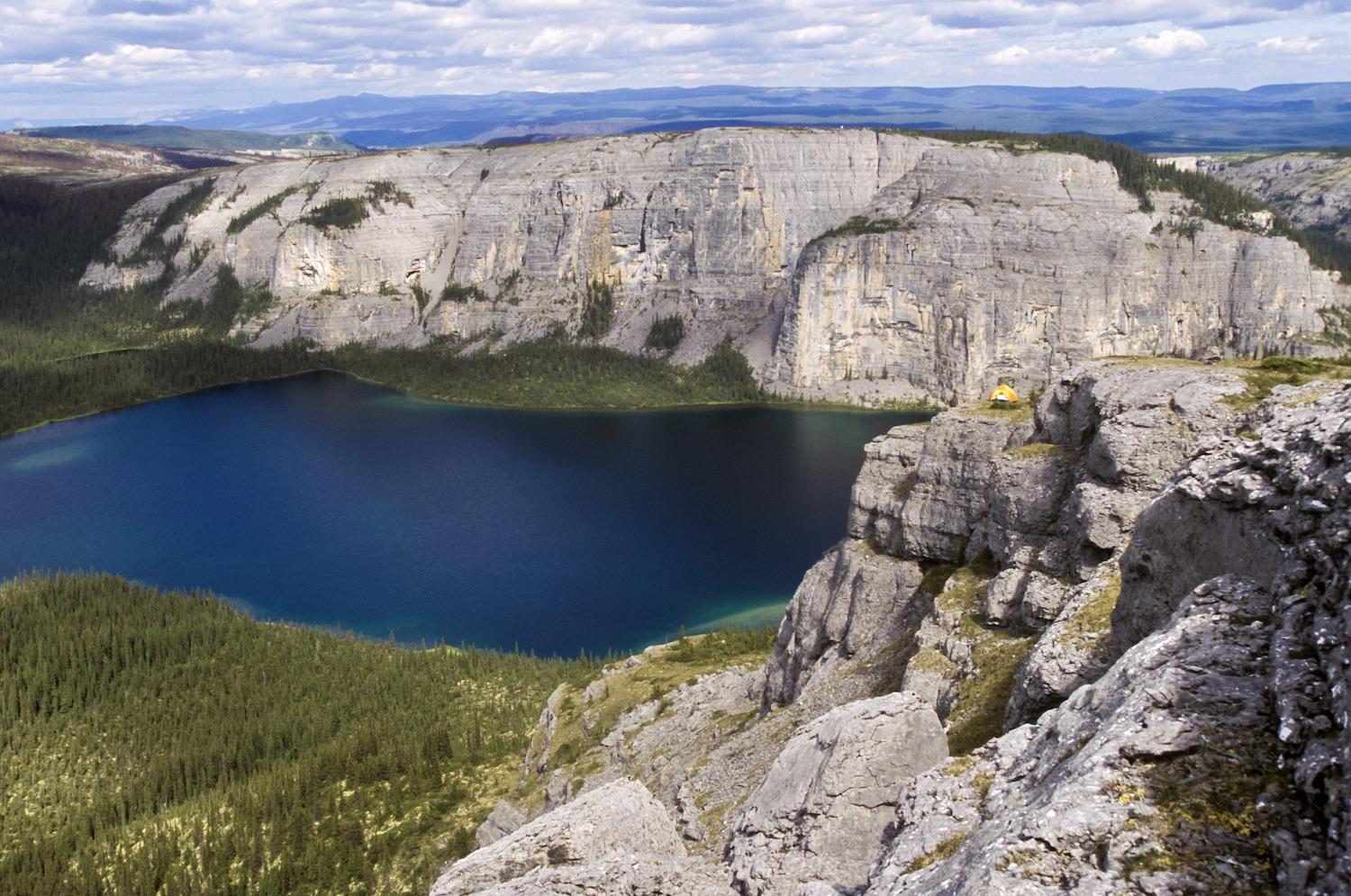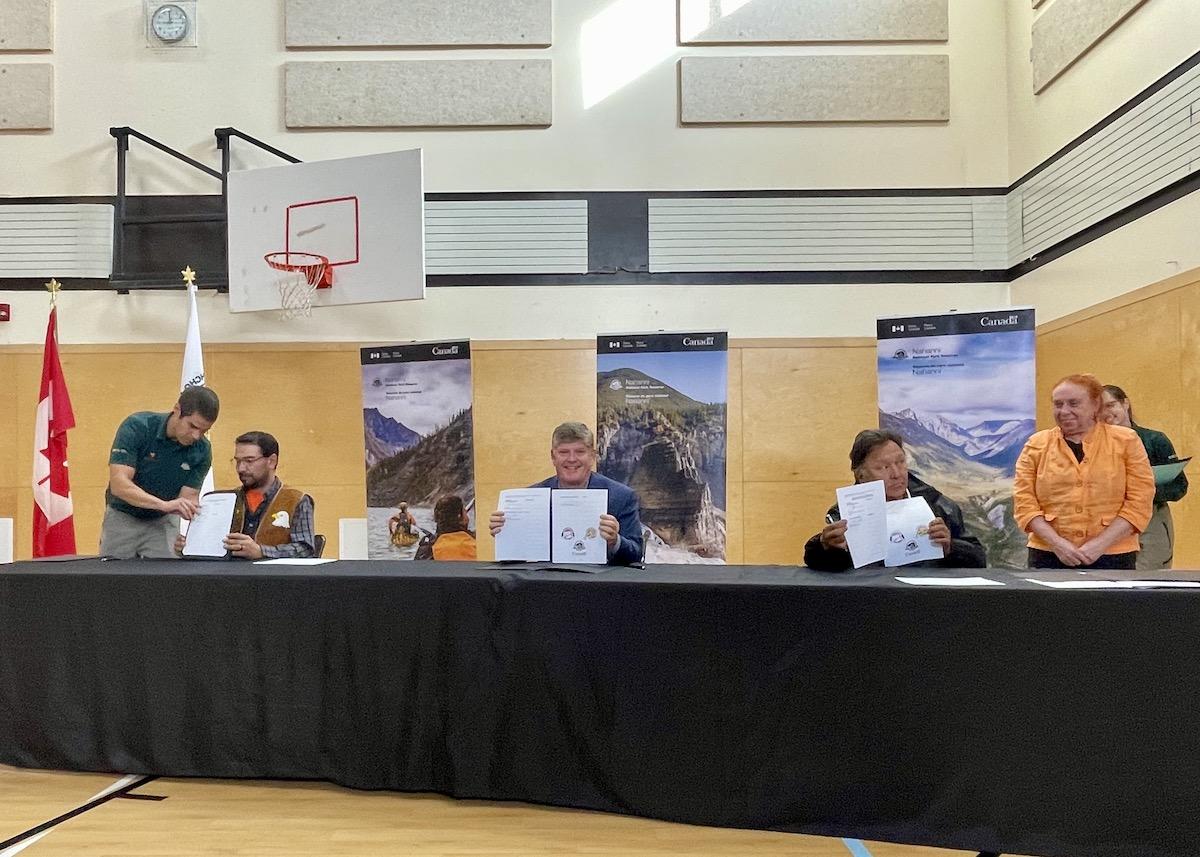
Nahanni National Park Reserve (Nah?ą Dehé) is a UNESCO World Heritage Site globally renowned for its geologic landforms/Parks Canada
A group of First Nations in the Northwest Territories has signed an agreement with Parks Canada to ensure they received social and economic opportunities in Nahanni National Park Reserve.
The Ndahecho Gondié Gháádé Agreement is expected to support at least 10 new jobs and three new buildings for Nahʔą Dehé Dene and Dehcho Dene in and around Nahanni Butte.
“Nahanni National Park Reserve is an ecological and cultural treasure,” Steven Guilbeault, Minister of Environment and Climate Change and Minister responsible for Parks Canada, said in a news release. “Honouring Indigenous peoples’ histories, cultures, and the special relationships they have with ancestral lands and waters, is part of our commitment to reconciliation.“
The agreement “will ensure Indigenous connections to the land are honoured, and integral to the protection of this wholly unique ecosystem," Guilbeault added. It builds on 20 years of successful cooperative management, and enhances the relationship in a context of respect and reconciliation.

Signing the Ndahecho Gondié Gháádé Agreement are (from left to right): Chief Steve Vital of the Nahʔą Dehé Dene Band, Parks Canada President/CEO Ron Hallman and Grand Chief Herb Norwegian of the Dehcho First Nations/Parks Canada
Key elements include new and innovative models for cooperative management, funding for the new Nahʔą Dehé K'ehodi (Guardians on the Land) program, employment opportunities, capacity development and economic provisions, as well as support for Elders and youth to participate in “on the land” programs.
Shared governance arrangements allow Parks Canada and Indigenous peoples to engage in collaborative decision-making for protected heritage places.
“Nahanni National Park Reserve is and always will be the traditional territory of the Nahʔą Dehé Dene Band,” Chief Steve Vital said in a news release. “The Nahʔą Dehé people are proud guardians of these lands and waters. Signing this agreement provides our community with the resources to honour this responsibility to our elders and ancestors, and gives our youth opportunities to learn and prosper as they do it.”
Grand Chief Herb Norwegian, Dehcho First Nations added that the park reserve is in the homeland of the Nahɂą Got'ı̨ę Territory. “It belongs to the people of the Nahɂą Got'ı̨ę — as Nahɂą Got'ı̨ę belongs to its land.”
The term “Nahanni” originates from Nahʔą Dehé, the Dene Zhatie name for what is known as Nahanni National Park Reserve.
The agreement details social and economic opportunities, as well as the establishment of a new structure for the cooperative management body — the Nahʔą Dehé Consensus Team — which will be supported through new administrative staff and new facilities to be constructed in Nahanni Butte.
Spearheaded in 1972 through an initiative led by then Prime Minister Pierre Elliott Trudeau, the Government of Canada recognized the “immeasurable value” of Nahanni by establishing it as a National Protected Area in 1976.

Canoeing in Nahanni National Park Reserve in the Northwest Territories/Parks Canada
Nahanni boasts mile-deep canyons, rugged mountain ranges, Náįlįcho (also known as Virginia Falls), hot springs, limestone karst and pseudokarst topography, and rich wildlife ecosystems. It has the highest mountains and largest glaciers in the territory, and Canada’s largest tufa mounds. It was inscribed on UNESCO’s World Heritage List in 1978. The South Nahanni River was designated as a Canadian Heritage River within Nahanni in January 1987.
Situated in the Dehcho Region in the southwest corner of the N.W.T., Nahʔą Dehé shares its northern boundary with Nááts’įhch’oh National Park Reserve (Nááts’įhch’oh). The South Nahanni River is the central feature of the Nahʔą Dehé. It originates at the height of land near the N.W.T. and Yukon border, ending more than 500 kilometres (310 miles) downstream at its confluence with the Liard River near the community of Tthenáágó (Nahanni Butte).
National park reserves do not impact the carrying on of traditional and spiritual activities of Indigenous rights holders.
Once land claims are settled and agreements are negotiated (addressing things such as cooperative management, harvesting and cultural and spiritual activities), the park reserve is designated under the Canada National Parks Act as a national park, assuring that any rights pursuant to the land claims are affirmed and that cooperative management with Indigenous peoples will continue. Until then, a national park reserve is managed like a national park.
In 2009, with the support of the elders and community leaders, the park was expanded six-fold to 30,050 square kilometres (11,500 square miles), making it Canada’s third largest national park. Shortly after, Parks Canada, Nahʔą Dehé Dene Band and Dehcho First Nations started working towards this agreement.
The Dehcho First Nations’ commitment to the 2009 expansion was rooted in their expectation that an Impact and Benefit Agreement (IBA) would be implemented. In 2009, Nahʔą Dehé Dene Band was a member of the Dehcho First Nations. The band was and continues to be recognized as having the majority of their traditional territory within Nahanni.
IBA negotiations with Dehcho First Nations, including Nahʔą Dehé Dene Band, began in 2012, were well advanced by 2017 and renewed in 2021 before the partners reached a consensus on a shared governance agreement.

 Support Essential Coverage of Essential Places
Support Essential Coverage of Essential Places



